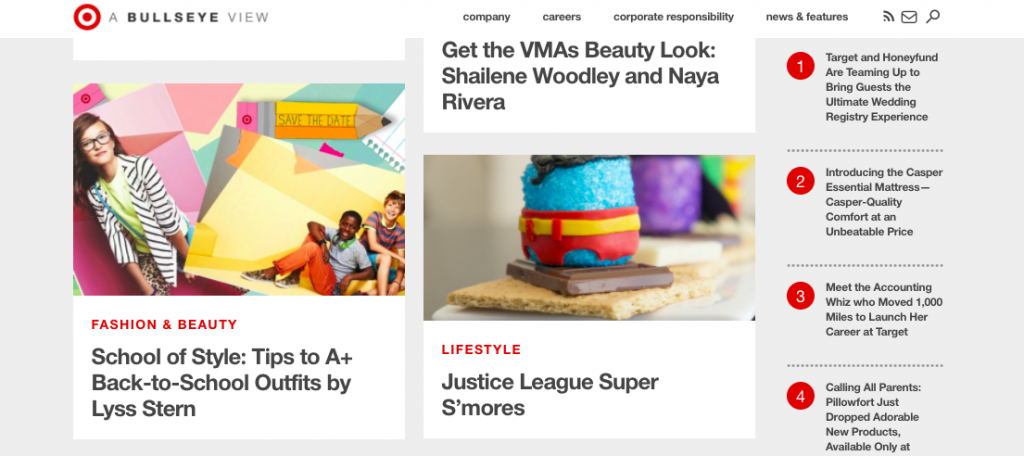When it comes to content marketing strategy, there are two main paths you can take. One option is the spaghetti method. It entails tossing a bunch of content out into the world and hoping that some of it sticks. The better option is targeted content marketing.
Successful brands practice targeted content marketing. To do so, you need a decent idea of who your audience is and what that audience wants. Then, you create content specifically for that audience, filling in gaps and helping to meet their needs.
Why Target Your Content Marketing?
There’s a reason targeted content marketing resonates with a specific audience. That’s because there’s so much content online, the average person will never get to interact with all of it. Hundreds of hours of video get uploaded to YouTube every minute, according to Wired. Millions of posts are put on Instagram daily. The amount of content available is enough to stress the average person out, as CNET points out.
Improves Timing & Reach
Targeting content lets you bypass the wall of existing content. This is accomplished with videos, blog posts and the like created specifically for an audience. Not only are you creating the content with a specific group of people in mind, you are also finding ways to promote and distribute the content so that it will reach the appropriate group.
Reduces Time Needed To Create Content
Another reason to target content marketing is that doing so will help you when it’s time to create the actual content. When you know that you’re producing videos designed to reach young moms who want help figuring out what to feed their toddlers, you have a better idea of what types of videos to create, and what topics or subjects to focus on.
Improves Brand Perception
Finally, targeting your content marketing can help to improve people’s perceptions of your brand. When you produce and distribute content that meets a specific customer’s specific needs, you are telling that person that you “get it,” and that you’re on their side. Being the brand that helps to solve people’s problems can help to improve their trust in you, and their overall opinion of your brand.
Examples of Targeted Content Marketing in Action
Once you’ve decided to target your content marketing, there are two ways to go about doing it.
First, you can target a specific audience segment, such young moms, video gamers, professional women, and so on. Alternatively, you can personalize content and direct it towards an individual person.
Here are a few examples from brands that have targeted a specific demographic or individual customers.
Lululemon
Lululemon is an “athleisure” brand known for its yoga pants. But to its fans, which number more than two million on Instagram, the brand is more than just stretchy pants and sports bras. That’s because Lululemon has gone out of its way to produce targeted content that appeals to the its health- and wellness-focused customers. The brand’s blog is full of workout tips, healthy recipes, advice from health-focused celebs, and more.
Target
As this 2012 article in the “New York Times” demonstrates, Target is the king of, well, targeted content marketing. Every time a person shops at Target and uses some piece of identifying information (like a credit card), the store tracks the purchase information in its database. It can then use that information to send out customized coupons or emails. Perhaps, most famously, the retailer was able to use the information on its customers to draw the conclusion that some people were pregnant, before others in their lives knew.
Yeti
Yeti produces high-end coolers that are meant to withstand pretty much whatever you throw at them. A person buying a Yeti cooler is likely to be more into rugged adventures than a person who’s going to pick up an inexpensive, plastic Igloo or Coleman cooler from their local Walmart. The brand has found a way to target that somewhat elusive cooler buyer, by publishing stories on its website all about interesting people pursuing interesting things. The stories aren’t specifically about coolers or how to use a cooler. Instead, they give the reader a sense of being an insider — part of special club.
How to Target Your Content Marketing
Ready to get started with targeted content marketing? Follow this step-by-step guide:
Define your “target.”
The first step when targeting your content marketing is deciding who it is you’ll target. You can identify one or more audiences, or decide to personalize content for individual people. Creating buyer personas for each audience will allow you to know who that audience is, what they need and want, what they like, where they hang out, and so on.
Brainstorm content types and topics.
Once you know who your audience is, it’s time to think of the type of content that will resonate the most with them, and topics that will be the most useful for them. Create a content calendar so that you have a regular schedule to follow.
Choose where to publish.
Different audiences hang out in different places online. If you’re targeting millennials, you might find that publishing videos on a YouTube channel is more effective that writing long-form blog posts. Remember that you can publish your content in several places, including on your brand’s website, and on its various social media channels.
Identify ways to promote your content.
Once you’ve published the content, you need to promote it. How you promote the content depends on your audience as well. For example, you might use influencers on Instagram if you’re trying to reach a particular group of people.
B2B brands that use content marketing target professionals or other companies. Thus, LinkedIn might be the way to go for promoting your content.
If your content marketing isn’t going anywhere, or if you’re having trouble getting the results from your content marketing, it could be that all you need is a target. When you have a target in mind, your content takes on form and direction. It’s better able to get where it’s going, since it has a destination in mind.











